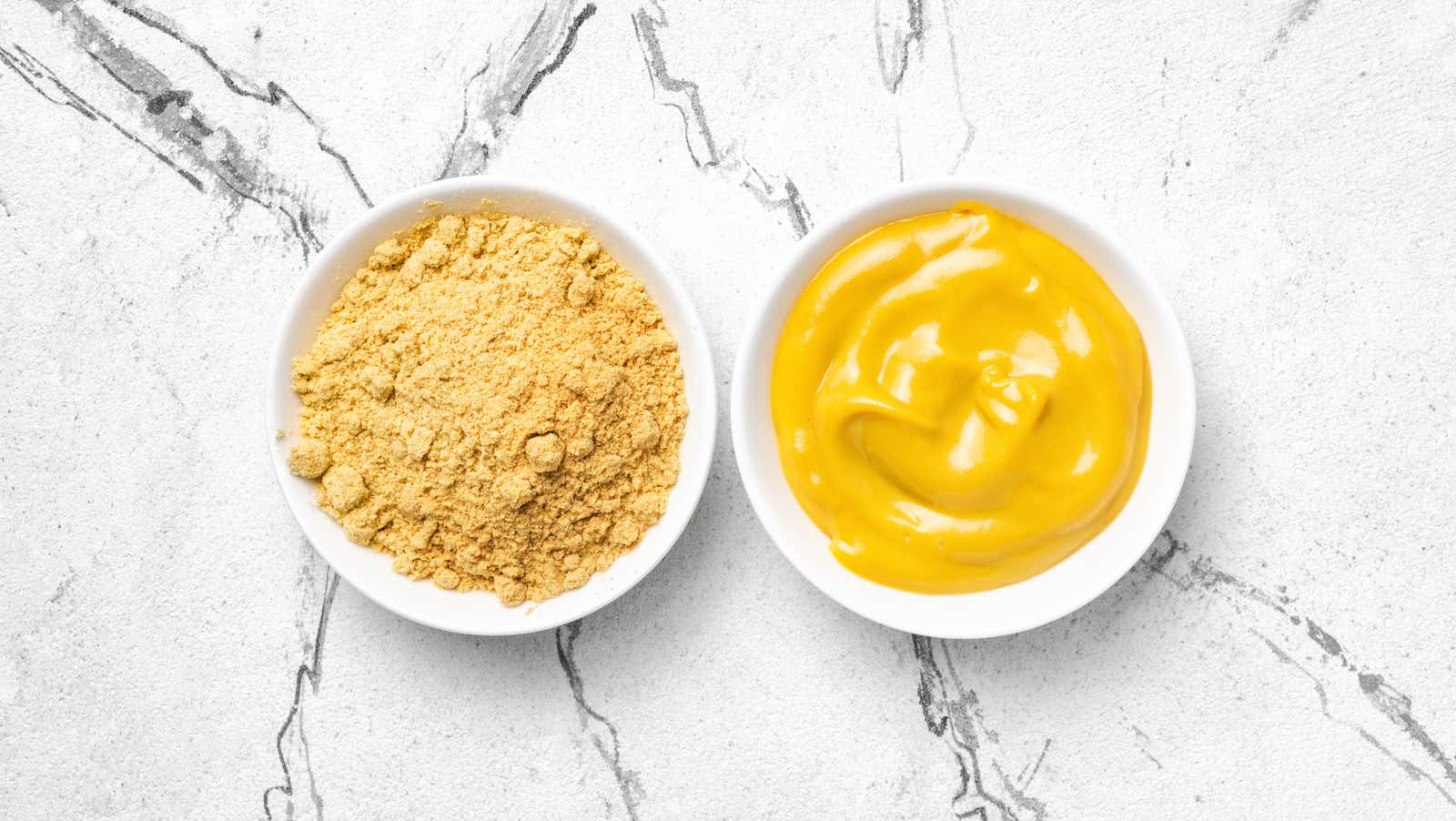How to Use Dried Mustard

If you ask someone what the “taste” of mustard is, they may tell you that it is both “hot” and “sour”, which is not entirely true. This half-truth is sometimes perpetuated by well-meaning cookery writers who advertise mustard as a “secret ingredient” capable of carving through the richness with its “acidity,” claiming that “yellow, Dijon, grainy and powdered mustard work” the same way.
While it is true that a bottle of prepared mustard like French contains a fair amount of vinegar, mustard seeds and dry ground mustard are not at all sour because they are free of acid. In fact, if you were making mustard from mustard powder, you could use vinegar (which contains acetic acid) to reduce the pungency of the mustard, but we’ll come back to that in a minute.
Dry mustard is a rather misunderstood ingredient that exists between whole seeds and cooked liquid mustard. It is sometimes called “mustard flour”. It is made from crushed seeds that have been sifted to remove the skin, resulting in a rather yellow powder that sits there unnoticed, waiting to be activated. Like wasabi, horseradish, and onions, mustard is another ingredient that people use to self-harm in a small, exhilarating way. Mustard tries to fight us off with tiny chemical weapons, but we are sick animals that sometimes love pain and so we are not stopped. (As far as the brand is concerned, I’m a big fan of S&B, which contains some turmeric, although Colman is good too).
All it takes is a little moisture. In fact, if you add a little water (and nothing else) to mustard powder, you have a super-strong sinus-clearing seasoning that rivals wamabi. According to Harold McGee’s book On Food and Cooking , you must damage and then moisten mustard seeds to activate their defense mechanisms:
Dry mustard seeds and their powder are not pungent. Their pungency develops within a few minutes or several hours when the seeds are soaked in liquid and crushed, or the pre-crushed seeds are simply moistened. The combination of moisture and cell damage revitalizes the seed enzymes and allows them to release caustic compounds from storage forms. Most ready-made mustards are made from acidic liquids – vinegar, wine, fruit juices – that slow down the action of enzymes, but also slow the disappearance of the pungent compounds as they gradually react with oxygen and other substances in the mixture.
So there’s a lot going on. Water activates enzymes, enzymes release pain molecules, and vinegar slows down the rate at which enzymes release pain molecules, decreasing (as well as prolonging) the pungency, but that’s not the only thing that can affect the taste of mustard. Heat also affects the pungency of the taste, Harold says, so there is a need to take time into account when adding dried mustard to a recipe:
Once the pungency develops, cooking will drive away and reshape the irritant molecules and thus reduce the pungency, leaving behind the more general scent of the cabbage family. Therefore, mustard is usually added at the end of the cooking process.
So when is the best time to use dried mustard? It depends on what you are trying to achieve. If you want a super aggressive, painful seasoning, mix the powder with an equal amount of water 10 minutes before you plan to consume it, then submerge your palate into oblivion. (I just took a break from writing this to make some painful mustard, which I then used to make some painful seasoned eggs.) You can also add some vinegar or sugar (to soften the heat) or white pepper to your homemade mustard. and other seasonings (for flavor).
Aside from making very good liquid mustard, dried mustard can be used in cooking, although it will taste much less pungent and slightly nutty (or cabbage) depending on when you add it. If, for example, you are making a batch of macaroni and cheese from a pound of cheese, don’t expect half a teaspoon of dry mustard to stand 45 minutes in the oven with its spiciness preserved, and certainly don’t. expect it to cut through all the acidity cheese. If you want sourness, you can use cooked mustard containing vinegar, or add some white wine vinegar. (Also, unlike Dijon and other stone mustards, dried mustard is not very good for emulsifying salad dressings , as all that healthy mucus lives in a seed coat that is sifted from dried mustard.)
But even if the pungency of mustard diminishes as a result of cooking and other ingredients, this does not mean that it should not be added. Dried mustard make add-depth warm toastiness, and a small amount of pungency. Just don’t expect him to cut through anything.